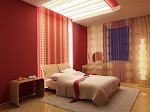Fabric Fashion Trends for Winter 2008 – 09
So what all are you wearing this winter? The markets are generally stuffed up with the fabrics with patterns and designs most in demand. Also fabric manufacturers continuously bring changes in their production process to add or introduce fabrics that stand apart from the crowd. This is but essential for them to survive in the dynamic fashion industry. Lets have a look at what are in things in this winters fabric and fashion arena!
Fabric Patterns
This winter, subtle prints with focus on the surfaces of fabrics is the major trend. Fabrics with  pleats, over stitches, wrinkles, blistered and ruffled effects can be easily found. New structural designs and multi-dimensional surfaces have fusion of natural and artificial fibers. Traditional fabrics are getting new looks as they are dyed with metallic tint. Fabrics embellished with prints in paisley, skin prints, floral designs, and embroidery other than softer looking graphic patterns are in vogue. Geometric patterns, metallic wefts, polka dots, sports mesh, animal prints, and polyamide designs are also being used.
pleats, over stitches, wrinkles, blistered and ruffled effects can be easily found. New structural designs and multi-dimensional surfaces have fusion of natural and artificial fibers. Traditional fabrics are getting new looks as they are dyed with metallic tint. Fabrics embellished with prints in paisley, skin prints, floral designs, and embroidery other than softer looking graphic patterns are in vogue. Geometric patterns, metallic wefts, polka dots, sports mesh, animal prints, and polyamide designs are also being used.
Tweeds, pinstripes, jacquards and checks are being frequently used for masculine patterns. For sheer feminine feel, delicate and fancy winter designs in pastels right from pearl to rose are there to attract everyone.
Fabric Texture
Wool is the main fabric but in featherweights or in cottons that are reworked. Fake furs this season are extra hairy to match with the ongoing wild spirit. Denim is coated with metallic oxidized effect having a little sheen. Truly a season of sophisticated finishes and effects! Smooth structures, double fabrics, velvet, fabrics having three dimensional effects and fancy weaves are all preferred by apparel manufacturers thus they are more than likely to be seen in markets. Concern for environment has led to the expansion of recycled clothing market. So, Green Apparels made from recycled materials like soda cans and pop bottles can also be found with ease.
Stretchable fabric with micro-structures in the weave are used for menswear fabrics. Wool, crepe, and cotton with seersucker effect and transparent weaves are favored for skirts.
So, What are you waiting for now? Just select your favorite fabric patterns and texture and go for a warm trendy wardrobe this season!
 Read more...
Read more...

























































